De-extinction, also known as resurrection biology, is the process of reviving extinct species. Here, we look at what animals scientists are trying to bring back.
The idea behind de-extinction is to bring back the biodiversity lost due to human activity, habitat loss and climate change. Scientists use DNA from extinct species to recreate their genetic code and then use cloning techniques to create a living organism that is genetically identical to the extinct species.
However, de-extinction raises many ethical questions and concerns, including the potential impact on ecosystems, the welfare of the resurrected animals, and the prioritization of resources for conservation efforts.
So, what animals are scientists trying to bring back?
1. Woolly Mammoth (Mammuthus primigenius)
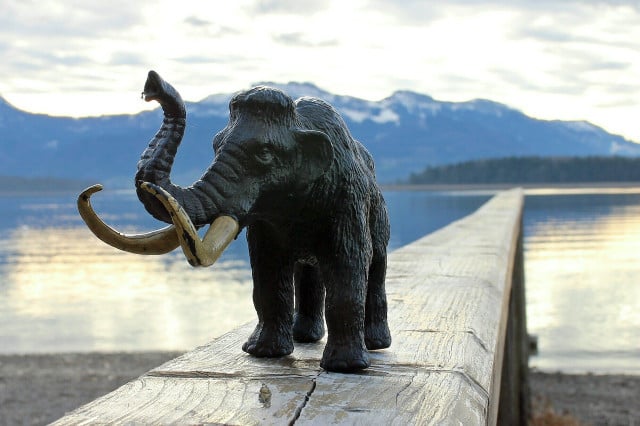
(Foto: CC0 / Pixabay / Antranias)
The woolly mammoth is an extinct elephant species that lived in the Pleistocene epoch (also known as the Ice Age). They became extinct around 4,000 years ago due to hunting and climate change. Scientists at the Colossal Laboratories & Biosciences are currently working on using CRISPR gene-editing technology to introduce mammoth DNA into elephant embryos to create a hybrid species that has mammoth-like traits.
They believe this may help to fill the void left by mammoths and support elephant communities in areas that are most at risk from ecological issues, such as the west coast of Africa, the African savannah, and Southeast Asia. Though the project has been ongoing for many years, it may take many more still. For instance, research notes they face issues such as complex DNA sequencing, and the actual harvesting process of a viable mammoth DNA source remains difficult.
2. Passenger Pigeon (Ectopistes migratorius)
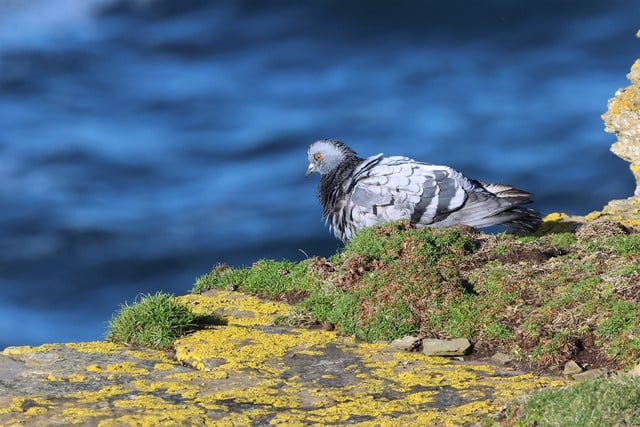


(Foto: CC0 / Pixabay / AidanSemmens)
The passenger pigeon was once one of the most abundant bird species in North America, but it became extinct in the early 20th century due to hunting and habitat loss. The last remaining captive passenger pigeon died at the Cincinnati Zoo in 1914. Scientists are working on using a genetic engineering technique known as genome-retooling to resurrect the passenger pigeon using DNA from preserved specimens.
Since there are no intact specimens of passenger pigeons left, genetic retooling would allow scientist to reconstruct their DNA by patching together multiple fragments of DNA using key aspects of the bird’s traits, such as its long tail, and splicing them together with its nearest relative, the common rock pigeon.
3. Tasmanian Tiger (Thylacinus cynocephalus)



(Foto: CC0 Public Domain / Unsplash / Dylan Ferreira )
The Tasmanian tiger, also known as the thylacine, was a carnivorous marsupial that became extinct in the early 20th century due to hunting and habitat loss. Its native habitat was originally in Australia, on the island of Tasmania (thus the name), where the last of the species died in captivity in 1936.
However, in 1999, Australian scientists began trying to clone DNA from preserved specimens to bring back this iconic species. The cloning process replicated four entire sections of the tiger’s DNA before a lack of proper facilities and poor specimen quality ended the initial project in 2005. Now scientists are once engaged in restarting the process, a project spearheaded by the University of Melbourne in partnership with a US biotech company.
4. Pyrenean Ibex (Capra pyrenaica pyrenaica)
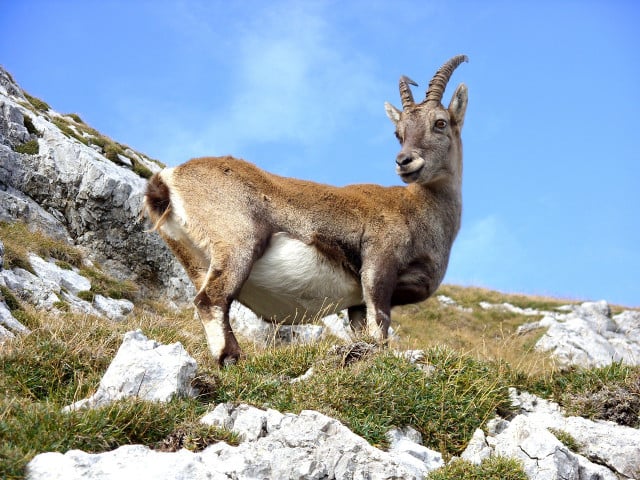


(Foto: CC0 / Pixabay / No-longer-here)
The Pyrenean ibex was a subspecies of the Spanish ibex, a wild goat that became extinct in 2000 due to overhunting. The last of the species died in Spain due to a fallen tree but had lived for several thousands of years before in Europe, Asia and Africa.
In 2003, scientists attempted to clone a Pyrenean ibex using nuclear transfer. Nuclear transfer is a laboratory technique used in cloning, which involves transferring the nucleus of a donor cell into an enucleated egg cell (an egg cell with its nucleus removed). The resulting cell can then be stimulated to divide and develop into a cloned embryo genetically identical to the donor cell. Unfortunately, though the cloning was partly successful, the clone died shortly after birth.
5. Dodo (Raphus cucullatus)
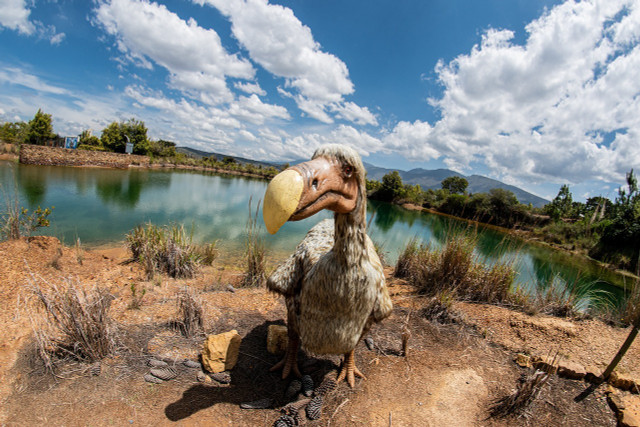


(Foto: CC0 / Pixabay / bergslay)
If you were asked what animals scientists are trying to bring back, the dodo’s famed extinction might come to mind. The dodo was a flightless bird that died out in the 17th century due to habitat loss, invasive species and diminishing food supplies. The dodo belonged to Mauritius, in the Indian Ocean, and is often regarded as one of the classic cases of how human actions have caused species extinction.
But, as of 2023, scientists started working on isolating the primordial germ cells (PGCs) needed to resurrect the dodo using DNA from its closest living relative, the Nicobar pigeon. PGCs are specialized cells that are the precursors to eggs in females and sperm in males. PGCs have the unique ability to create all of the cells that make up the reproductive cell of an animal, as well as the supporting cells that surround and nourish them. This project has received $225 million in investment, which will hopefully see results in the years to come.
6. Carolina Parakeet (Conuropsis carolinensis)
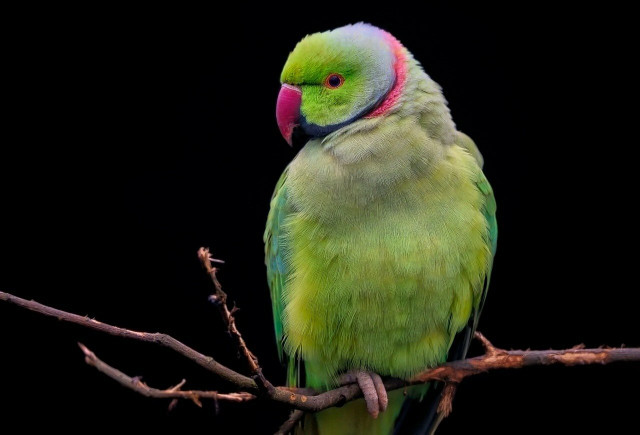


(Foto: CC0 / Pixabay / ambquinn)
The Carolina parakeet was a brightly-colored bird species that used to occupy more than half of the United States. However, they became extinct in the early 20th century. Although it is most likely due to habitat loss, scientists are still unsure. Because of the mysteries surrounding its disappearance, scientists have been eager to learn more about the species, in particular, how it could shed light on modern bird conservation.
In 2019, they managed to sequence the bird’s DNA using the shin bone and toe pads of a Carolina parakeet killed and stuffed in the 1800s. Referencing the DNA of its closest relative, the South American sun parakeet, they examined why the bird might have become extinct and found that the poultry disease spread by human activity might have been the cause. While we still don’t know for certain, the DNA sequencing of this species may leave the door open for further investigations and potential revivals.
7. Great Auk (Pinguinus impennis)
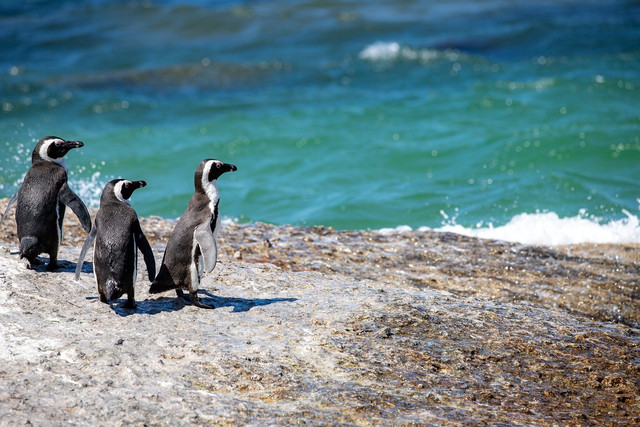


(Foto: CC0 / Pixabay / Michael_Luenen)
The great auk was a flightless seabird, the only one of its kind that lived across the North Atlantic Ocean. It is a species that became extinct in the 19th century due to hunting and egg collecting.
However, recently scientists have the great auk as a candidate for de-extinction and are now working towards completing the in silico phase of research. They must start with the in silico phase, which employs computer simulations and bioinformatics tools to analyze and reconstruct the genetic material of extinct species. During this phase, scientists use genetic data from fossils and other sources to reconstruct the complete or partial genome of the extinct species.
8. Gastric Brooding Frog (Rheobatrachus silus)
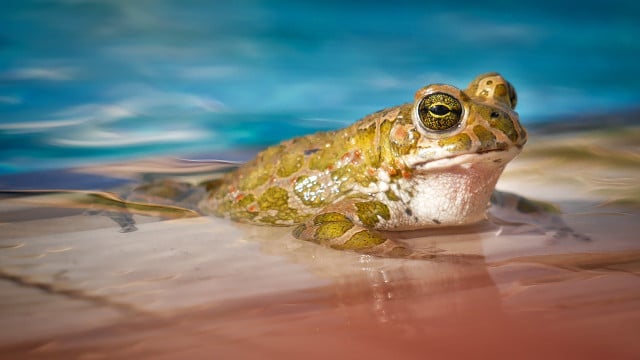


(Foto: CC0 / Pixabay / fietzfotos)
The gastric brooding frog, also known as the platypus frog, was a unique species of frog native to Australia. It was named for its unusual reproduction method — the female would swallow her fertilized eggs and carry them in her stomach until they hatched. The species went extinct in the mid-1980s, likely due to fungal disease.
In the early 2000s, scientists explored the possibility of de-extincting the gastric brooding frog. In 2013, a team of researchers led by Mike Archer at the University of New South Wales successfully cloned embryos of the extinct species using preserved genetic material from museum specimens. The embryos were implanted into the eggs of a related species, the great barred frog. Although they did not survive to maturity, the experiment marked a significant step forward in de-extinction research.
9. Quagga (Equus quagga quagga)
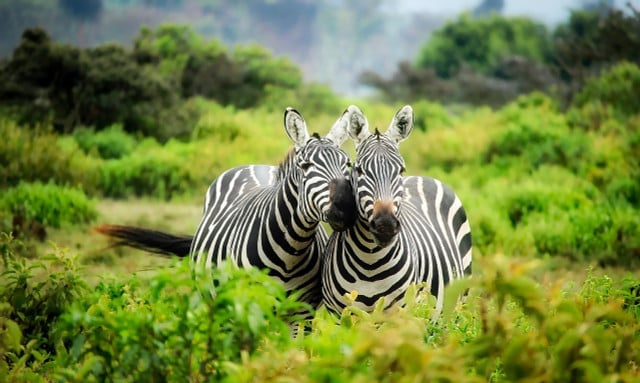


(Foto: CC0 / Pixabay / 12019)
The quagga, a type of South African plains zebra, went extinct in the late 19th century. At the time, it wasn’t known that the quagga mare who died in captivity was the last of her kind, as there had been some confusion due to the similarity with the common zebra. Unfortunately, it wouldn’t be until years later that they realized that the species had completely died out from hunting.
In 1987, however, scientists attempted to bring the species back to life. A project called the Quagga Project was launched in South Africa to selectively breed plains zebras to produce animals with quagga-like characteristics.
Though the Quagga Project successfully produced animals with quagga-like characteristics, there are limitations to how closely these animals resemble the extinct species. Because the quagga went extinct before DNA technology was developed, there is limited genetic material available to compare with the animals produced by the Quagga Project.
10. Aurochs / Tauros (Bos primigenius)
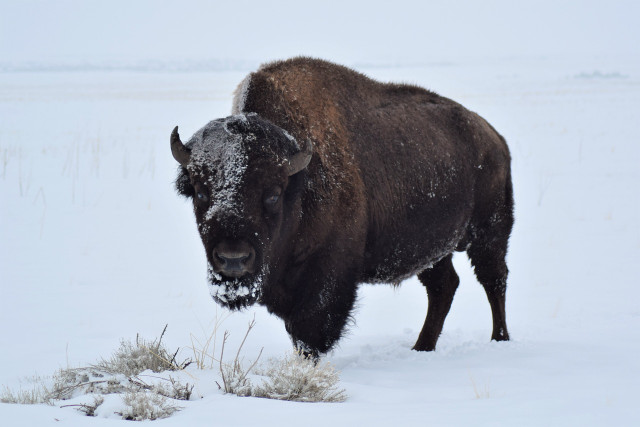


(Foto: CC0 / Pixabay / Lindasay)
The aurochs (Bos primigenius) were a large wild cattle species that roamed Eurasia and North Africa. They were a central feature of European culture and mythology for thousands of years and were domesticated by early humans, which led to the domesticated cattle breeds we know today. However, the last wild aurochs died sometime in the 1600s, and the species was declared extinct soon after.
In recent years, there have been efforts to “de-extinct” the aurochs by selectively breeding modern cattle to try to recreate the characteristics of the extinct species. One organization leading these efforts is the Tauros Foundation, which is working to create a new breed of cattle called the Tauros that closely resembles the aurochs in appearance and behavior. But it has the same problem as the quagga in that it will never 100% genetically resemble the original species.
11. Saber-Toothed Cat (Smilodon populator)
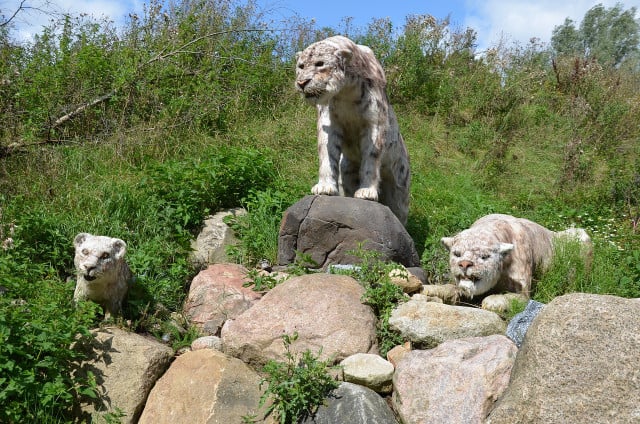


(Foto: CC0 / Pixabay / Frank_P_AJJ74)
The saber-toothed cat (Smilodon populator) was a big cat species that lived during the Pleistocene epoch (Ice Age), which ended approximately 10,000 years ago. They were native to North and South America and are famous for their long, curved canine teeth. The saber-toothed cat went extinct along with many other large mammals during the Late Pleistocene extinction event, but fossils were discovered in Brazil in the 1830s.
In 2020, scientists sequenced the nuclear genome of the cat, making it one of the oldest genome draft attempts in South America. However, they came across a few issues. The remains of the saber-tooth cat, as we can imagine, are highly degraded, making revival a difficult process. It is also unclear what the impact of reintroducing a predator like the saber-toothed cat would be on modern ecosystems, as the ecosystems of the Pleistocene were vastly different from those of today.
12. Heath Hen (Tympanuchus cupido cupido)
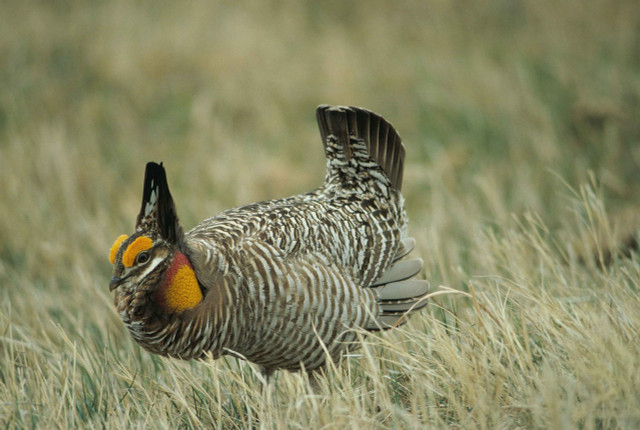


(Foto: CC0 / Pixabay / PublicDomainImages)
On the list of species that scientists are trying to bring back, you might be surprised to find a chicken. The heath hen (Tympanuchus cupido cupido) was a subspecies of the Greater Prairie Chicken endemic to the northeastern United States, primarily in Massachusetts and Rhode Island. The last known wild heath hen died in 1932 on Martha’s Vineyard, and the subspecies was declared extinct in 1933.
In recent years, there have been efforts to “de-extinct” the heath hen by analyzing the genome of birds that closely resembles the extinct subspecies. One organization leading these efforts is the Revive & Restore project, which uses modern genetic techniques to recreate the heath hen. But reviving extinct subspecies poses challenges due to low genetic diversity, which may lead to health issues and reduced fitness. Introducing a new population, especially if genetically modified, requires careful consideration of potential impacts.
13. Maclear's Rat (Rattus macleari)
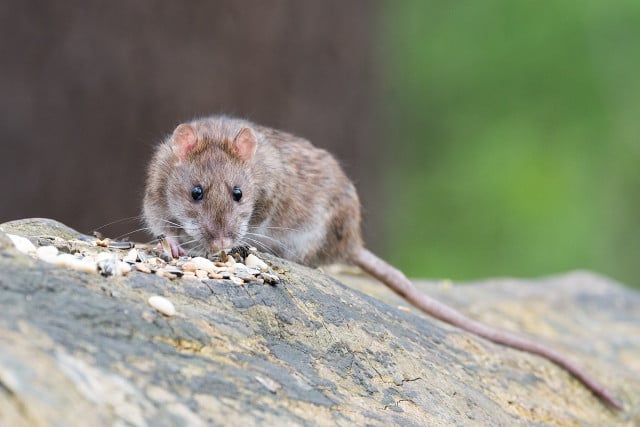


(Foto: CC0 / Pixabay / wolfgangvogt_lb)
The Maclear’s rat (Rattus macleari) was a species of rodent that was endemic to Christmas Island, an Australian territory in the Indian Ocean. The species was first discovered in 1886 and was known to exist only on Christmas Island. The Maclear’s rat was a nocturnal species that lived in the island’s forests and was a key component of the island’s ecosystem. Their extinction was due to the introduction of black rats to the island, which preyed on, spread disease to, and outcompeted the native rats. The last known sighting was in 1903.
As of 2022, Dr. Tom Gilbert at the University of Copenhagen announced plans for experiments to ‘de-extinct’ the Christmas Island rat soon. Because the species has a 95% shared genome with the Norwegian brown rat, it should be an easier task than reviving long-extinct species like the woolly mammoth. However, to replicate the missing 5%, scientists would have to edit the DNA of brown rats to find a similar match, with no guarantee of results.
What Animals Will Scientists Try to Bring Back in the Future?
De-extinction efforts come with several issues. One of the main concerns is the ethical debate surrounding resurrecting extinct species. Critics argue that such efforts take away resources from conservation efforts for endangered and threatened species and may cause harm to ecosystems. However, some believe that reviving extinct species is a moral obligation and can help restore biodiversity.
Another challenge is the technical difficulty of successfully cloning extinct species. The degraded DNA of many extinct species may not be suitable for cloning. Additionally, the genetic makeup of the extinct species may not be compatible with modern species, making it challenging to create a viable hybrid.
Lastly, there is the question of what to do with the resurrected animals. Some believe that reintroducing these animals into the wild is the best option, while others suggest keeping them in captivity to prevent any disruptions to ecosystems and unintended consequences.
In short, de-extinction is a promising but controversial field that aims to revive extinct species using modern genetic engineering and cloning technologies. While scientists have made progress in resurrecting several extinct species, there are still many technical and ethical challenges to overcome. The importance of this field lies in the potential for restoring biodiversity and preserving the natural world for future generations.
Read on:
- The 15 Most Endangered Animals in America
- Human-Environment Interaction: Definition & Examples
- Why the Mexican Gray Wolf is Endangered and How You Can Help
Do you like this post?






